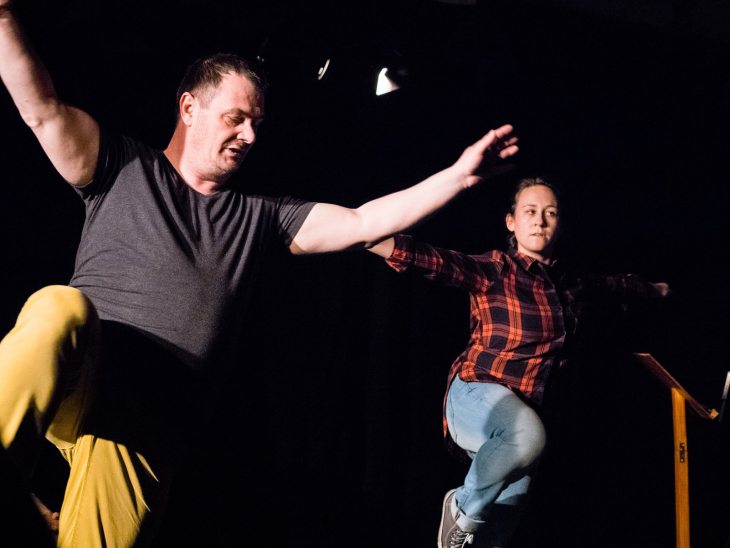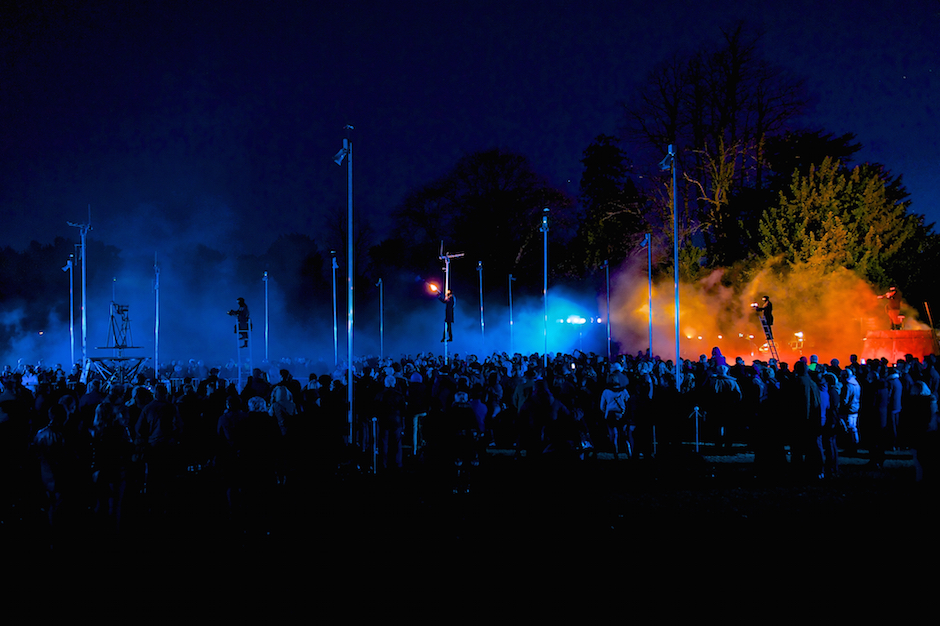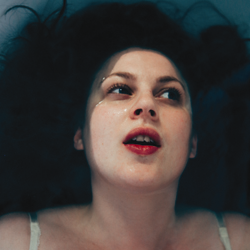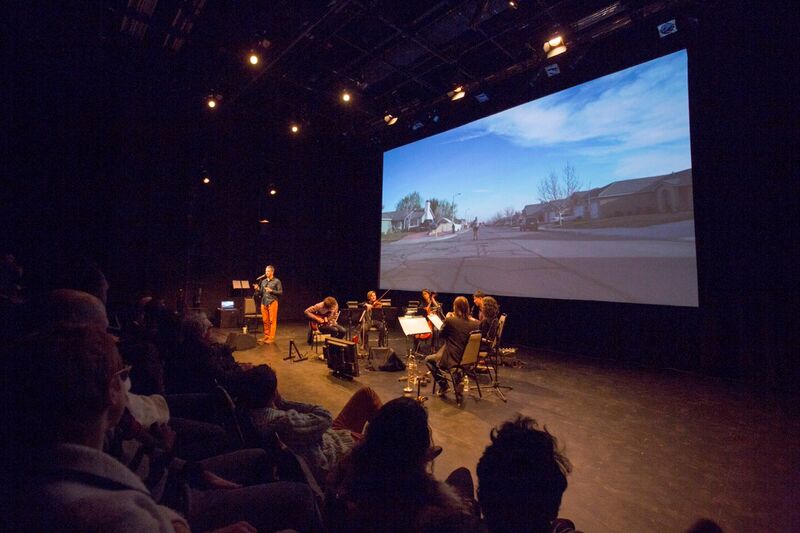Sister Sledge’s classic disco track He’s the Greatest Dancer is playing. The Basement main space is packed – sold out for a lunchtime dance show from Iceland! Everyone is relaxed and chatty, including the two performers who are just hanging out in the performance space, casually greeting people as they come in. One is a slim, androgynous woman with dark hair, dressed in jeans and a red check shirt. The other is a big-framed middle-age man with a beer belly, wearing yellow trousers and a black T-shirt. The man is telling people that his daughter is coming along today, and that the seat in the front is reserved for her.
Here’s the show’s story, which we mostly glean from projected video clips: the man is Ármann Einarsson. He’s in his fifties, and lives in place called Akureyri in North Iceland. in 2013 he revealed to his daughter-in-law, choreographer Brogan Davison, that he has a dream – he wants to pursue his life-long desire to perform contemporary dance on stage, although he has never had any formal dance training. The show that they’ve developed together (and tour with Ármann’s son Petur as the technician, making it a truly family affair) asks the question: Is dance really for everybody?
Interesting question. Watching Ármann dance his choreographed contemporary dance routines, echoed by Brogan, you cannot but help admire his resolution and dedication. But context is everything: taken without the frame of the show, it would all be rather odd –but as it is, interspersed with constant reflection on the process, it becomes a fascinating investigation of the nature of dance, and the drive to dance. How was it that time? asks Brogan. I think it went great, says Ármann. Is that the best you’ve done it? she asks. Yes, I think so. And at another point he says: I’m in perfect shape – a lovely demolishing of the notion that you need to be a certain size or level of fitness to dance. He doesn’t want to be seen as a fat clown, he says.
It’s a piece with a familiar kind of format – two performers stepping in and out of the dance action, sometimes on-mic and sometimes not, talking directly to the audience – a knowing cross between dance and live art, postmodern to the nth degree in its constant reflection onstage of what is happening on the stage, and what has happened before. The inclusion of confessional video exploring Ármann’s motivation and the process of making the work is also a familiar contemporary dance/performance trope. Art will eat itself…
But it works because Ármann is such a genuinely endearing character. And (I say this as someone who has Icelandic friends and spent time in Iceland) he is so very very – Icelandic. It’s something about the way he tells his stories, which often have bizarre and puzzling punchlines. There’s a rambling story about berry barrels and fjords full of ice, a story about a butcher, a recounting of how when his dad was left to cook the dinner he went out to buy two hot dogs for himself and little Ármann, and a sharing of how special Coca Cola used to be in Iceland – something you only got twice a year if you were lucky, on your birthday and at Christmas, and that it came in tiny glass bottles. Oh and a pretty hair-raising tale of drunkeness, when he came home one night and almost accidentally pissed on his son’s computer instead of in the toilet, because he’d mistaken his son’s bedroom for the loo.
When it is Brogan’s turn to tell us her stories, we learn that she was born in England during the great hurricane of 1987, that she danced as a child, and that aged 10 she tried to give up ballet but no one would let her as she had talent, although later there were the usual queries about whether she had quite the right body required to dance. So here we have someone kind of destined to dance who tried to get out of it, as opposed to her father-in-law to be (she’s marrying Petur soon) who nobody ever thought to encourage, but who has held a long-term ambition to dance. An interesting juxtaposition.
The stories, live and on film, are interspersed with dance sequences – sometimes just one or other of them, sometimes both together. Ármann never looks truly comfortable, although he does say ‘when I want to feel good, I dance like this”. It’s a reminder that dance (unlike theatre) is all about the experience of the enactor, not of the witness.
There’s a very lovely moment, close to the end, when we see musician Ármann playing a mellow jazz tune on his clarinet. Suddenly he’s a different man – no longer the awkward person trying to get something right that is an effort, but the expert, the person in control, master of his instrument. It’s magical.
But there’s an interesting reflection to make here: Ármann’s music mastery has taken him only to a life as a high school music teacher. Now he’s a (non) dancer who dances, he dances all over the world. Brighton today, next stop Berlin – and maybe Brazil too.
I started a little sceptical – but Dance For Me won me over. A sweet and charming show that raises interesting questions about contemporary dance – and about following your heart’s desire.





